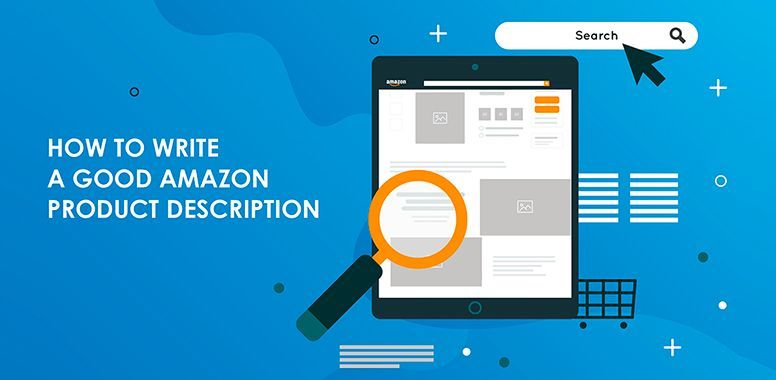Hijacked Listings on Amazon: How to Detect, Prevent, and Take Action
Imagine this: You spend months building your Amazon listing—crafting compelling copy, optimizing keywords, gathering reviews, and designing top-notch A+ Content. Then one morning, your branded product is replaced with a suspicious version from another seller, your bullet points are butchered, and the Buy Box is gone.
You’ve just been hijacked.
Hijacked listings are a nightmare for legitimate sellers, especially brand owners. They compromise your reputation, confuse customers, and eat away at your revenue. Worst of all, if left unchecked, they can destroy the trust you’ve built with your buyers.
In this blog, we’ll walk you through how to detect hijackers, prevent attacks on your listing, and take swift action when it happens.
What Is a Hijacked Listing on Amazon?
A hijacked listing occurs when an unauthorized seller jumps on your product detail page and starts selling what appears to be your product—often a counterfeit, knockoff, or gray-market version. In some cases, they even edit your listing content, change the images, or undercut you to win the Buy Box.
This usually happens to sellers who:
- Use FBA without brand registry
- Sell private label or white-label products
- Have generic packaging that’s easy to replicate
If you’re not actively monitoring your listings, it’s easy to miss a hijacker until the damage is done.
Why Hijacking Is So Dangerous
Hijacked listings don’t just cost you a few sales—they can ruin your brand:
- Lost Buy Box = lost revenue
- Negative reviews from fake products impact your rating
- Suppressed listings from customer complaints
- Account health issues if Amazon sees you as the problem
- Permanent damage to your product’s SEO and conversion rate
And if you're a brand-focused seller, hijacking is a direct assault on your intellectual property.
How to Detect a Hijacked Listing
Spotting a hijack early is critical. Here’s how to monitor your listings like a hawk:
1. Check the “Sold By” Section
Go to your product page and look at the Buy Box. If it doesn’t say your store name (or it’s being shared), you’ve got company.
Click on “Other Sellers on Amazon” to see who else is listing your product. If you see unknown sellers offering your SKU at unusually low prices—red flag.
2. Monitor Price Fluctuations
A sudden drop in price could mean a hijacker is undercutting you to win the Buy Box. Track pricing changes daily.
3. Use Alerts & Tools
Use software like:
- Helium 10 – Alerts
- Keepa – Price tracking
- Sellerboard – Hijack monitoring
- Bindwise – Listing change alerts
These tools notify you when new sellers jump on your listings or your content gets modified.
4. Watch for Content Changes
Hijackers may swap your images, title, or bullets to match their counterfeit version. Use the “Manage Inventory” section to regularly audit your listing content.
How to Prevent Listing Hijackers
Prevention is the best defense. Here’s how to make your listings tougher to hijack:
1. Enroll in Amazon Brand Registry
This is your strongest line of defense. Brand Registry gives you:
- Listing content control
- Access to Amazon’s Report a Violation tool
- Brand support team access
- Transparency program eligibility
Without Brand Registry, anyone can edit your listing. With it, you hold the keys.
2. Use Amazon Transparency
Transparency is a product serialization program that lets Amazon verify your item before shipping it. Only units with valid Transparency codes can be shipped—making it nearly impossible for hijackers to pass off fakes.
3. Include Branded Packaging & Logos
Generic packaging invites counterfeiters. Make sure your product and packaging include:
- Clear brand logos
- Unique identifiers (model #, UPC, batch code)
- Branded inserts
Also, include “Ships in branded packaging” in your listing to warn copycats and inform customers.
4. Stay Off Generic/Shared Listings
Never piggyback on existing generic ASINs. Always create your own unique listings and protect them with Brand Registry.
How to Take Action Against Hijackers
If your listing has been hijacked, act fast. The longer the unauthorized seller stays on your listing, the more reviews and revenue they can poison.
Step 1: Document Everything
Take screenshots of:
- The listing (with the hijacker’s store name)
- Product differences (if it’s a counterfeit)
- Customer complaints or reviews related to the hijacker
- Your original product and packaging
Step 2: Send a Cease and Desist Message
You can message the hijacker through Amazon Seller Central. Be professional and direct.
Sample message:
Hello,
You are currently listing a product under our protected ASIN: [ASIN]. We are the brand owner and manufacturer of this product. Your listing is unauthorized and violates our intellectual property rights.
Please remove your offer within 24 hours to avoid a formal complaint to Amazon’s Brand Protection team.
Sincerely,
[Your Brand Name]
Some hijackers back off immediately. Others don’t.
Step 3: File a Report with Amazon
If the seller doesn’t respond, use Amazon’s Report Infringement tool:
- Go to Brand Registry > Report a Violation
- File under "Unauthorized Seller / Counterfeit"
- Submit all documentation
If you're not enrolled in Brand Registry, file a general support case and include your proof.
Step 4: Escalate If Needed
If Amazon doesn’t act, escalate:
- Contact Seller Support with a violation report
- Call Amazon’s Brand Registry support line
- Loop in an IP attorney if necessary
You can also file a DMCA takedown request if content is being used without authorization.
What If You're Not Brand Registered Yet?
While Brand Registry is best, you can still take some protective actions:
- Use strong brand presence on packaging
- File infringement cases manually
- Include trademarked brand name in your title (this can help in Buy Box disputes)
- Register your trademark ASAP to unlock Brand Registry
Pro Tip: Watch Your Competitors Too
If you're in a competitive niche, hijackers may be targeting your rivals too. Study how they respond, monitor their listings, and prepare your own defenses.
Final Thoughts: Own Your Listing, Own Your Brand
A hijacked listing is more than a nuisance—it’s a threat to everything you’ve built on Amazon. But with the right vigilance, tools, and legal backup, you can protect your turf.
- Detect quickly
- Act immediately
- Prevent permanently
You’ve worked hard to build your brand. Don’t let someone else steal it overnight.
Need help removing hijackers or setting up Brand Registry and Transparency? Our team can audit your listings, take enforcement action, and keep your brand protected across all Amazon marketplaces. Let’s talk.


